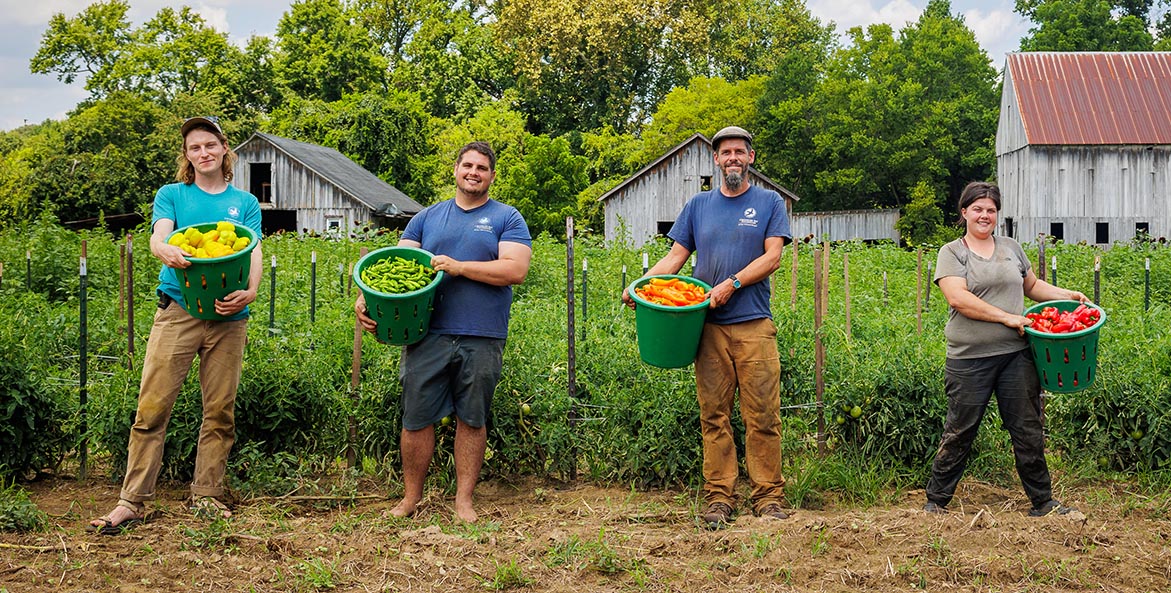“When we take off narrow blinders, solutions become abundant,” writes CBF President and CEO Hilary Harp Falk in a discussion of how to address pollution from agriculture and other challenges facing Bay restoration. The Chesapeake Bay region’s food system profoundly affects the watershed and the people who live here, and it was the subject of our fall issue of Save the Bay magazine. Agriculture covers nearly one-third of the watershed’s area, a use second only to forests, and produces upwards of $10 billion a year. It’s also the largest source of pollution in the Bay. Finding a balance will require rethinking not just the practices farmers use, but also the programs and policies needed to speed their adoption. The innovative program helping to protect the headwaters of the James River is one such example. The targeted restoration plans for the Conestoga River in Lancaster County, Pennsylvania, is another. But it’s not just farmers. States will have to think about how they manage intensifying industrial agriculture in places like the Delmarva Peninsula. Individuals can also play a role—for example by supporting local growers that use regenerative farming practices. Other big stories this month include Maryland Gov. Wes Moore’s election to chair of the Chesapeake Executive Council and the latest striped bass survey results, along with many opportunities to take action and get involved in our work.
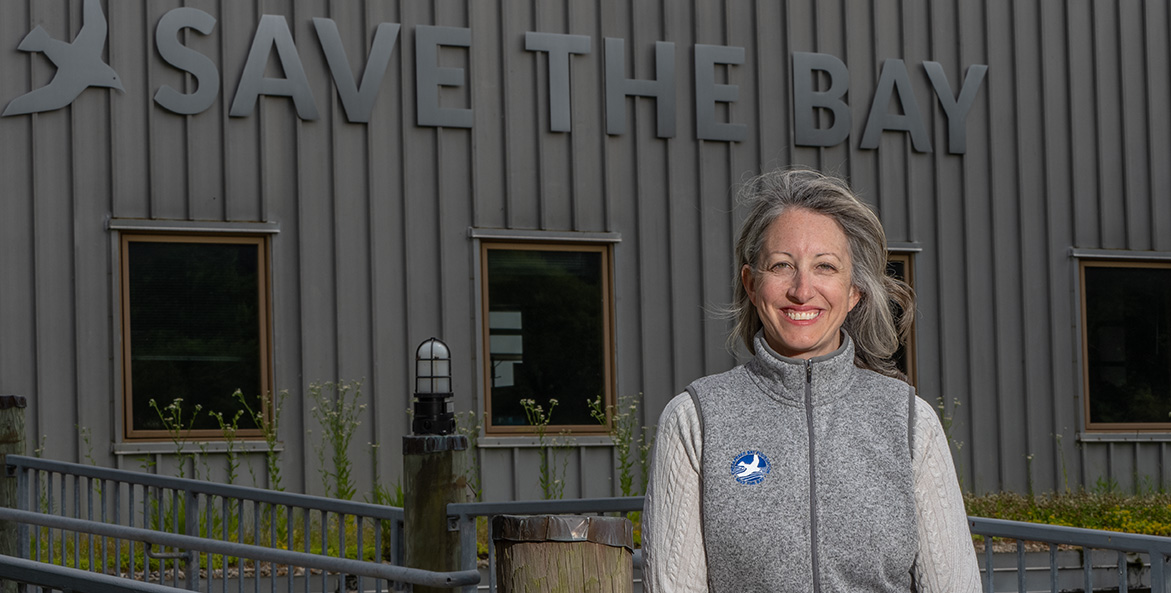
CBF President and CEO Hilary Harp Falk.
Setting the Table
Agriculture remains one of the biggest challenges to clean water, but it is also one of our biggest opportunities to be creative, innovative, and effective in creating the watershed of the future, writes CBF President and CEO Hilary Harp Falk. Solutions require taking off narrow blinders, being willing to change, and bringing our best to the table.
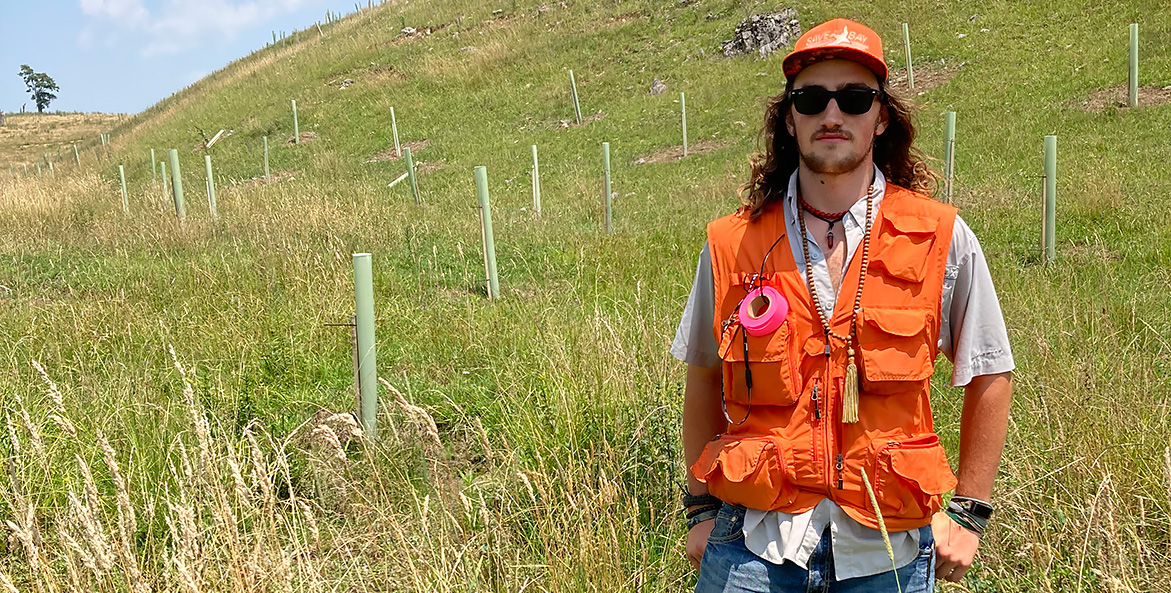
Cory Conger, a forestry student and CBF’s Virginia Restoration Intern, checks a recently planted streamside buffer to help ensure the trees survive.
Codi Yeager/CBF Staff
Healing the Headwaters
In the place where the James River is born high in the Appalachian hills of Virginia, a new approach to an old conservation practice is revolutionizing the planting of forested buffers along stream sides. If scaled up, it could finally help states achieve what has remained elusive for years: getting a lot of trees in the ground, fast.
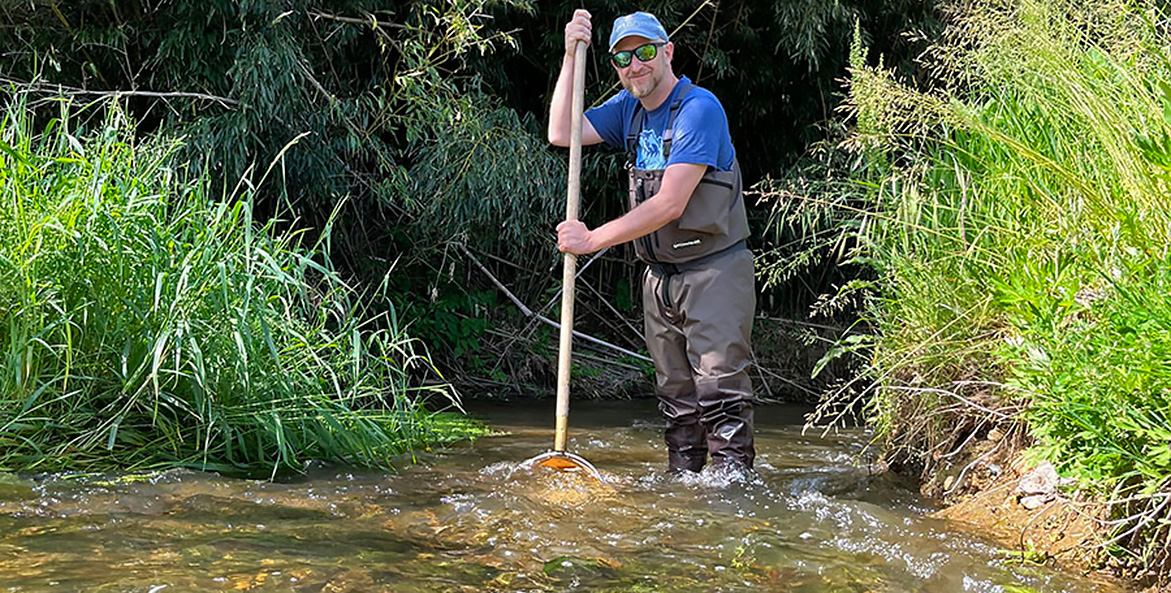
Brian Gish, CBF’s Watershed Coordinator for south-central Pennsylvania, creates restoration plans for impaired waterways.
Brian Gish/CBF Staff
Tackling Pollution Hotspots
“If Lancaster County alone were to clean up its waterways, the entire state [of Pennsylvania] would be well on its way to meeting the targets for the Chesapeake Bay,” says CBF’s Brian Gish. By creating restoration plans for impaired creeks and rivers in Lancaster and other pollution hotspots, Gish and his colleagues are helping to target restoration efforts where they are needed most.
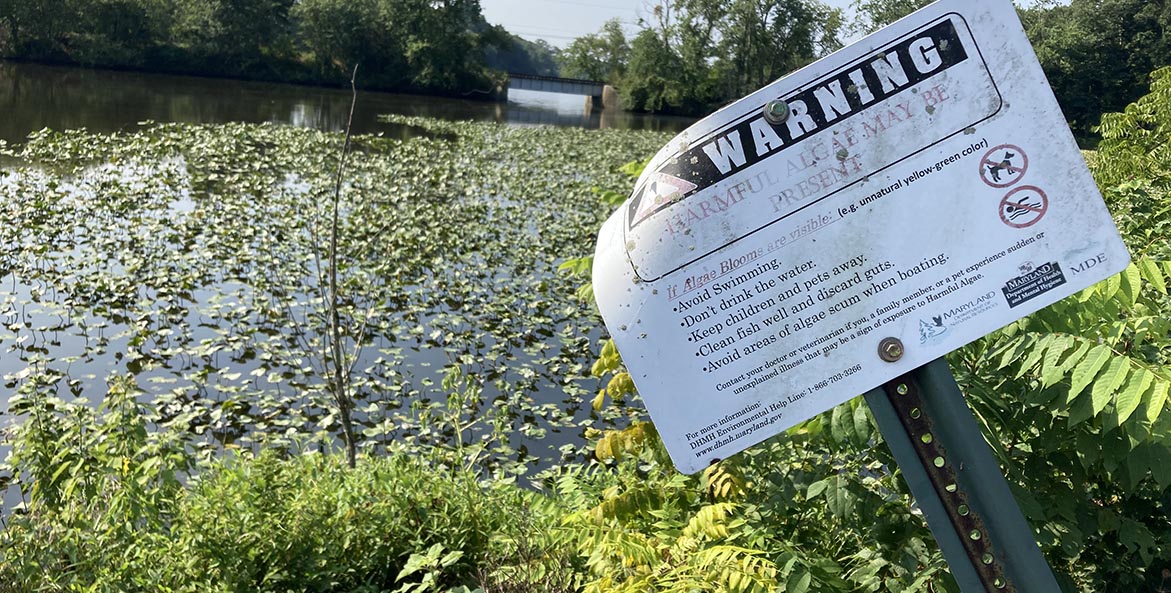
The community that might enjoy Higgins Millpond on the Transquaking River is warned about the dangers of swimming, boating, and fishing due to pollution and toxic algal blooms.
Codi Yeager/CBF Staff
Big Ag Tips the Scales
For the past two years, CBF and our partners have worked to ensure wastewater permits for the Valley Proteins rendering plant, on Maryland’s Eastern Shore, are protective of water quality in the Transquaking River system. But the plant is emblematic of a bigger question: Can conservation practices keep up with intensifying livestock production in places like the Delmarva Peninsula?
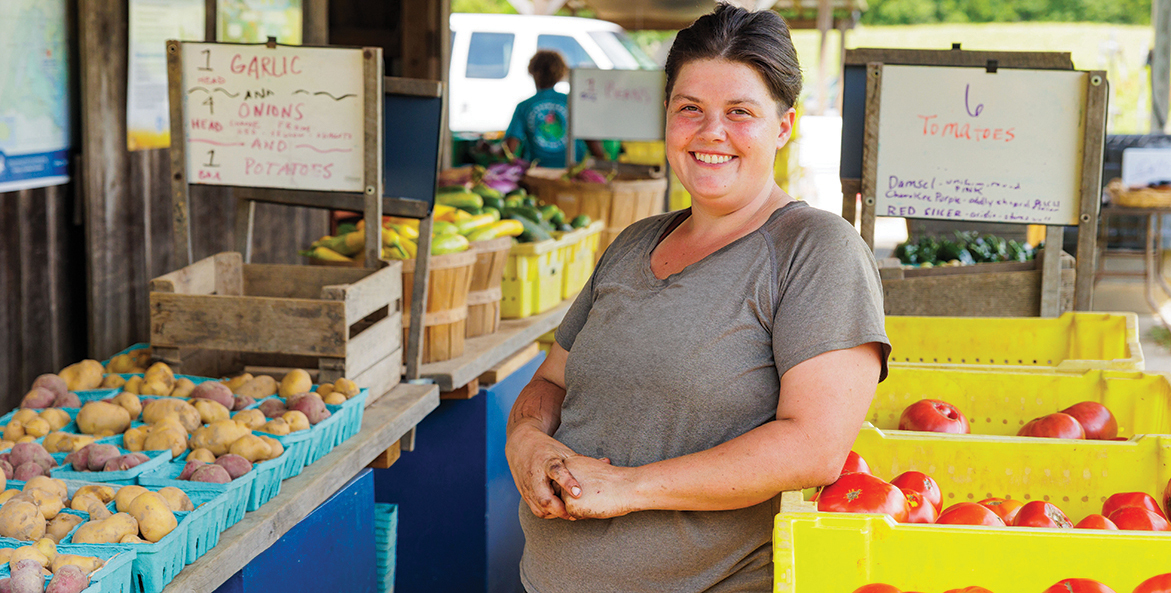
Through its Community Supported Agriculture Program (CSA), CBF's Clagett Farm serves 300 shareholders and provides thousands of pounds of fresh produce to local food banks. Elissa Planz, above, has served as CBF's Distribution Coordinator since March 2022.
Caroline Phillips
Why Eat Local
If we saved the Bay, what would a dream food system look like? That’s the question Jared Planz and the rest of the team at CBF’s Clagett Farm are working to answer by demonstrating regenerative agricultural practices that improve soil health, prevent pollution, mitigate climate change, and feed local communities. Other local growers are, too.
In the News
- Striped bass survey results are strikingly low: For the fifth consecutive year, numbers of juvenile fish remained far below average in Maryland, and significantly lower in Virginia as well. Fishery managers released an updated management plan for public comment.
- Chesapeake Executive Council elects Maryland Gov. Wes Moore to chair: It’s a pivotal time as the council, which leads the federal-state Bay partnership, considers new approaches for future restoration.
- CBF Virginia oyster gardeners break record: 691 volunteers raised 146,533 oysters planted on nearby sanctuary reefs in 2023—enough to filter up to 7.3 million gallons of water per day.
- CBF testifies in support of House bill to bolster Bay science, education, and restoration: The bipartisan bill would reauthorize the National Oceanic and Atmospheric Administration’s Chesapeake Bay Office, strengthen the Office’s fisheries research and restoration programs, and authorize the Chesapeake Bay Watershed Education and Training program.
- High school students take action at climate summit: CBF student leaders from across the watershed worked to develop climate change solutions that can be implemented in their communities.
- Between now and Nov. 25, Maryland residents have an opportunity to provide comments to the Maryland Department of the Environment concerning a permit that governs how more than 1,400 industrial facilities manage pollution from stormwater runoff. Take action now.
- Pennsylvania considers bill to plant native trees and plants along highways: You can take action now to show your support.
- Virginia’s 2024 General Assembly session is fast approaching. Add your voice in support of Bay-friendly legislation to ban toxic pavement sealants and keep critical wetland protections in place.
What You Can Do
- It’s almost Halloween! Carve up your pumpkins with our free Ches-O’-Lantern stencils and spook your friends with fun facts about the five scariest critters in the Bay.
- From building oyster reef balls to planting trees, join us in the field to do great things for the Bay. Check out our events calendar.
- Spring applications for our Education Program are now open! Teachers, request your dates for our one-day boat, canoe, and streamside outdoor learning programs for students.
- Stay up-to-date on the latest Bay-saving efforts and breaking news by joining our SMS Action Network.
- Trick or treat! Donate today and treat the Bay to a better chance at restoration this Halloween.

